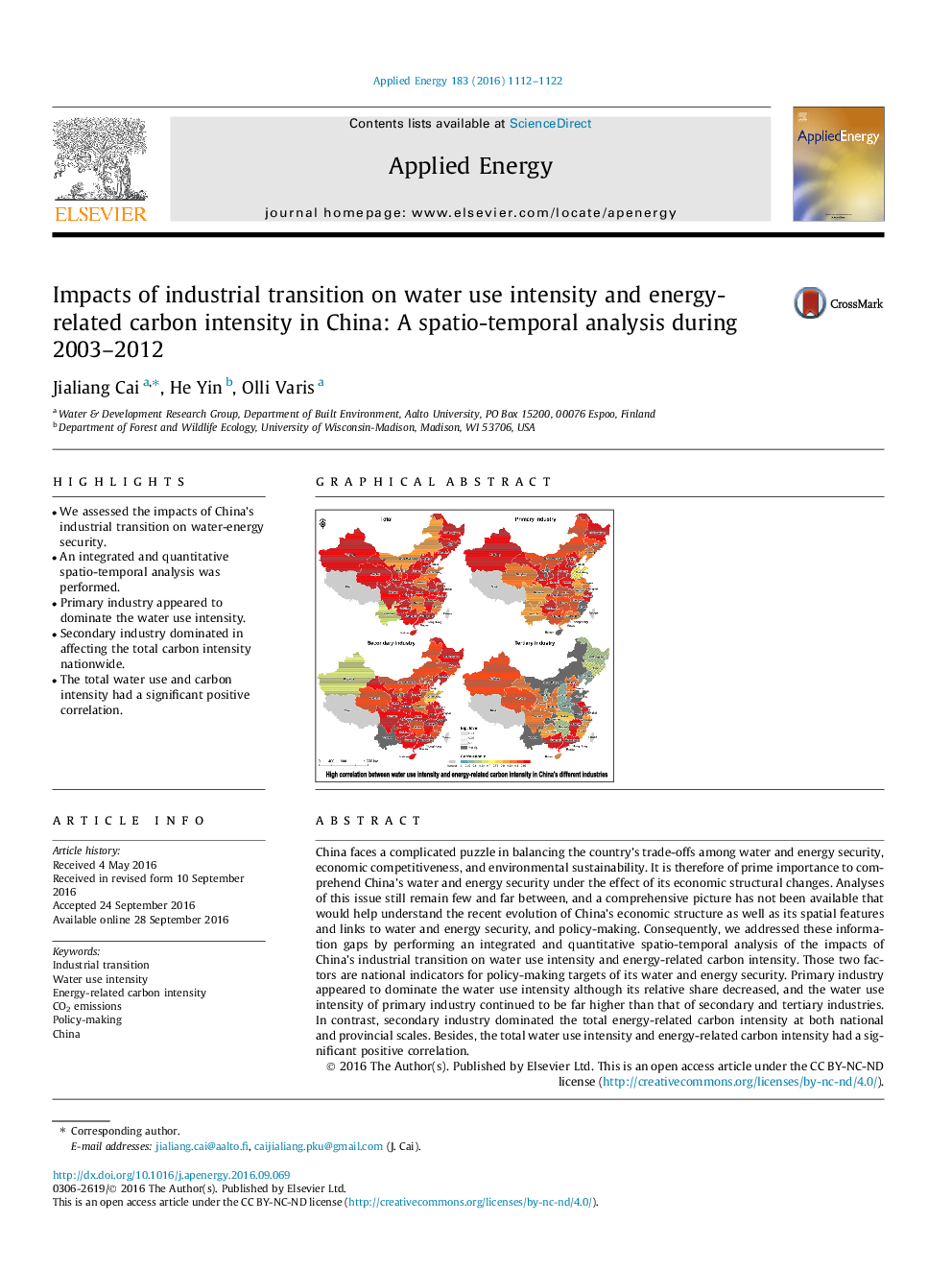| کد مقاله | کد نشریه | سال انتشار | مقاله انگلیسی | نسخه تمام متن |
|---|---|---|---|---|
| 4916638 | 1428105 | 2016 | 11 صفحه PDF | دانلود رایگان |
- We assessed the impacts of China's industrial transition on water-energy security.
- An integrated and quantitative spatio-temporal analysis was performed.
- Primary industry appeared to dominate the water use intensity.
- Secondary industry dominated in affecting the total carbon intensity nationwide.
- The total water use and carbon intensity had a significant positive correlation.
China faces a complicated puzzle in balancing the country's trade-offs among water and energy security, economic competitiveness, and environmental sustainability. It is therefore of prime importance to comprehend China's water and energy security under the effect of its economic structural changes. Analyses of this issue still remain few and far between, and a comprehensive picture has not been available that would help understand the recent evolution of China's economic structure as well as its spatial features and links to water and energy security, and policy-making. Consequently, we addressed these information gaps by performing an integrated and quantitative spatio-temporal analysis of the impacts of China's industrial transition on water use intensity and energy-related carbon intensity. Those two factors are national indicators for policy-making targets of its water and energy security. Primary industry appeared to dominate the water use intensity although its relative share decreased, and the water use intensity of primary industry continued to be far higher than that of secondary and tertiary industries. In contrast, secondary industry dominated the total energy-related carbon intensity at both national and provincial scales. Besides, the total water use intensity and energy-related carbon intensity had a significant positive correlation.
96
Journal: Applied Energy - Volume 183, 1 December 2016, Pages 1112-1122
